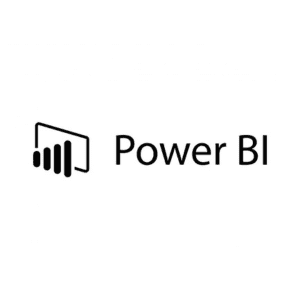Analytics Tools: Measuring & Analyzing Marketing Performance
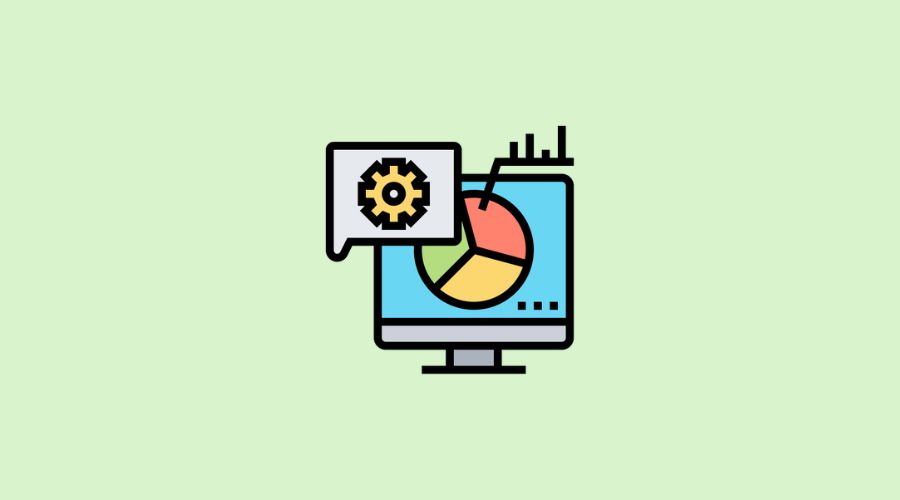
In today’s data-driven world, analytics tools have become indispensable for businesses aiming to gain insights, make informed decisions, and drive success. These tools empower organizations to collect, analyze, and interpret vast amounts of data from various sources, enabling them to uncover valuable trends, patterns, and opportunities.
In this blog, we will explore the realm of these tools, delving into their functionalities, benefits, and how they can be leveraged to unlock valuable insights and drive growth. Whether it’s website analytics, social media analytics, or business intelligence tools, we will explore the diverse range of available tools, highlighting their role in helping businesses make data-driven decisions and achieve their goals.
Best Data Analytics Tools for Data Analysts in 2025
In this post, we’ll highlight some key data analytics tools you need to know and why. From open-source tools to commercial software, you’ll get a quick overview of each, including its applications, pros, and cons. Even better, a few of those on this list contain AI data analytics tools, so you’re at the forefront of the field.
We’ll start our list with the must-haves—the data analysis tools you can’t do without. Then we’ll move on to some of the organizations’ more popular tools and platforms. Whether you’re preparing for an interview or are deciding which tool to learn next, by the end of this post, you’ll have an idea of how to progress.
Microsoft Excel

Excel at a glance:
- Type of tool: Spreadsheet software.
- Availability: Commercial.
- Mostly used for: Data wrangling and reporting.
- Pros: Widely used, with lots of useful functions and plug-ins.
- Cons: Cost, calculation errors, and poor handling of big data.
The most well-known spreadsheet program is Excel. Additionally, it has graphing and computation tools that are excellent for data analysis. Microsoft Excel is a standard across industries, regardless of your area of expertise or other software you use. Its pivot tables (for sorting or tallying data) and form-creation tools are useful built-in capabilities.
It also provides a wide range of additional features that simplify data manipulation. For instance, you can merge text, numbers, and dates into a single cell with the CONCATENATE function. Excel’s search feature makes it easy to isolate specific data, and SUMIF lets you calculate totals based on flexible criteria.
It has limitations, but it’s an important and powerful data analysis tool, and with many plug-ins available, you can bypass Excel’s shortcomings. Get started with these ten Excel formulas for data analysts.
Python

Python at a glance:
- Type of tool: Programming language.
- Availability: Open-source, with thousands of free libraries.
- Used for: Everything from data scraping to analysis and reporting.
- Pros: Easy to learn, highly versatile, widely used.
- Cons: Memory-intensive—doesn’t execute as fast as other languages.
It is an essential tool for every data analyst and has many applications. It prioritizes readability more than more sophisticated languages, and programmers are already familiar with it. Python is adaptable and provides a range of libraries for various data analytics tasks. The NumPy and pandas libraries are excellent for supporting generic data manipulation.
Libraries like Beautiful Soup and Scrapy are used to scrape data from the web, while Matplotlib is excellent for data visualization and reporting. Python‘s main drawback is its speed—it is memory-intensive and slower than many languages. In general, though, Python’s benefits far outweigh its drawbacks when building software from scratch. You can learn more about Pythis’ post.
R

R at a glance:
- Type of tool: source.
- They are mostly used for Statistical analysis and data mining.
- Pros: Platform independent, highly compatible, lots of packages.
- Cons: More difficult to understand than Python, and needs to be faster and more secure.
It is a well-known open-source programming language, much like Python. Software for statistical and data analysis is frequently made with it. Python’s syntax is simpler than R’s, but R’s learning curve is longer. However, it is widely used for data visualization and was designed expressly for demanding statistical computing workloads. The Comprehensive R Archive Network, or CRAN for short, offers more than 10,000 packages for R, just like Python’s network of publicly accessible code.
It integrates well with other languages and systems (including big data software) and can call on C, C++, and FORTRAN code. On the downside, it has poor memory management, and while there is a good community of users to call on for help, R needs a dedicated support team. But there is an excellent R-specific integrated development environment (IDE) called RStudio, which is always a bonus!
Also Read: Lead Generation: Best Ways To Improve Your Client Base
Jupyter Notebook
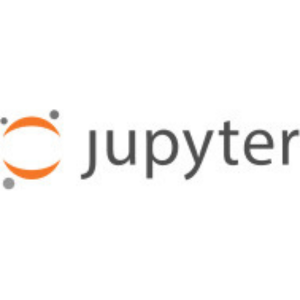
Jupyter Notebook at a glance:
- Type of tool: Interactive authoring software.
- Availability: Open-source.
- They are mostly used for sharing code, creating tutorials, and presenting work.
- Pros: Great for showcasing, language-independent.
- Cons: Not self-contained, nor great for collaboration.
It is an open-source web application that allows you to create interactive documents. These combine live code, equations, visualizations, and narrative text. Imagine something like a Microsoft Word document, only far more interactive and designed specifically for data analytics! As a data analytics tool, it’s great for showcasing work: Jupyter Notebook runs in the browser and supports over 40 languages, including Python and R. It also integrates with big data analysis tools, like Apache Spark (see below) and offers various outputs from HTML to images, videos, and more.
But it has its limitations, just as with every tool. Version control for Jupyter Notebook documents is inadequate, making it difficult to track changes. This indicates better locations for development and analytics work (you should use a specific IDE for both) and would be better for collaboration. Giving any other assets (like libraries or runtime systems) to anyone you share the document with would be best because it isn’t self-contained. However, it remains an essential data science and analytics tool for presentations and tutorials.
Apache Spark
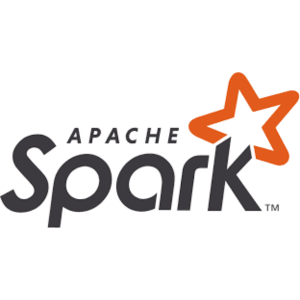
Apache Spark at a glance:
- Type of tool: Data processing framework.
- Availability: Open-source.
- Mostly used for Big data processing and machine learning.
- Pros: Fast, dynamic, and easy to use.
- Cons: No file management system, rigid user interface.
Data scientists and analysts can quickly analyze huge data sets with the software architecture Apache Spark. It was initially created in 2012 and then donated to the charitable Apache Software Foundation. Spark is a distributed analytics framework for analyzing large-scale, unstructured datasets.
While other frameworks are similar (such as Apache Hadoop), Spark is incredibly fast. It is approximately 100 times quicker than Hadoop since it uses RAM rather than local memory. And it is frequently used to train machine learning models that require large amounts of data.
Also, it has a machine learning library, MLlib, including classification, regression, and clustering algorithms, to name a few. On the downside, consuming so much memory means Spark is computationally expensive. It also lacks a file management system, so it usually requires integration with other software, such as Hadoop.
Also Read: 8 Best Tag Management Solutions You Should Consider
SAS
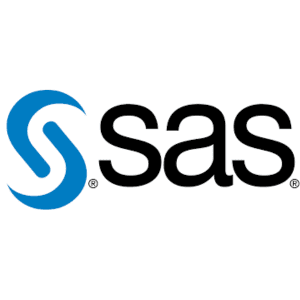
SAS at a glance:
- Type of tool: Statistical software suite.
- Availability: Commercial.
- They are mostly used for Business intelligence, multivariate, and predictive analysis.
- Pros: Easily accessible, business-focused, and good user support.
- Cons: High cost, poor graphical representation.
A well-known set of commercial business intelligence and data analysis tools is called SAS (Statistical Analysis System). It was created in the 1960s by the SAS Institute and has subsequently changed. Today, key uses are customer profiling, reporting, data mining, and predictive modeling. The software was designed for the enterprise market and is typically more reliable, adaptable, and easier to use for large businesses. This is because their in-house programming skills vary frequently.
SAS has a hefty price tag but is a commercial product with benefits. It has fewer Python libraries, but it’s highly focused. For instance, it offers modules in anti-money laundering and Internet of Things analytics.
Microsoft Power BI
Power BI at a glance:
- Type of tool: Business analytics suite.
- Availability: Commercial software (with a free version available).
- Mostly used for Everything from data visualization to predictive analytics.
- Pros: Great data connectivity, regular updates, and good visualizations.
- Cons: Clunky user interface, rigid formulas, data limits (in the free version).
Power BI is a relative newcomer to the market for data analytics solutions ,with a lifespan of less than ten years. It was first developed as an Excel plug-in but was later updated as a standalone suite of corporate data analysis tools in the early 2010s. With a low learning curve, Power BI users can easily build interactive visual reports and dashboards. Its strong data integration is its key selling point; it works well with cloud sources such as Google and Facebook Analytics, text files, SQL servers, and Excel (as expected from a Microsoft product).
It also offers strong data visualization but has room for improvement in other areas. For example, it has a quite bulky user interface, rigid formulas, and a proprietary language (Data Analytics Expressions, or ‘DAX’) that isn’t very user-friendly. It does offer several subscriptions, though, including a free one. This is great if you want to get to grips with the tool, though the free version has drawbacks—the main one being the low data limit (around 2GB).
Tableau

Tableau at a glance:
- Type of tool: Data visualization tool.
- Availability: Commercial.
- Mostly used for creating data dashboards and worksheets.
- Pros: Great visualizations, speed, interactivity, and mobile support.
- Cons: Poor version control, no data pre-processing.
If you have limited coding experience, Tableau is one of the greatest commercial data analysis tools for building interactive visualizations and dashboards. The suite is incredibly user-friendly and handles massive volumes of data better than many other BI tools. Its visual drag-and-drop interface is another feature that sets it apart from other data analysis tools. However, Tableau can only do so much since it needs a scripting layer. For making more intricate calculations or data pre-processing, for example.
While it does contain functions for manipulating data, these aren’t great. As a rule, you must perform Python or R scripting functions before importing your data into Tableau. But its visualization is pretty top-notch, making it popular despite its drawbacks. Furthermore, it’s mobile-ready. As a data analyst, mobility might not be your priority, but it’s nice to have if you want to dabble on the move! You can learn more about Tableau in this post.
KNIME
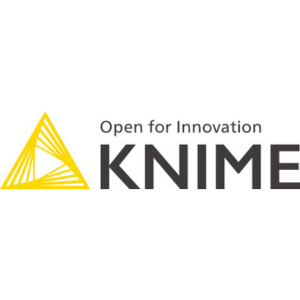
KNIME at a glance:
- Type of tool: Data integration platform.
- Availability: Open-source.
- Mostly used for Data mining and machine learning.
- Pros: An open-source platform that is great for visually driven programming.
- Cons: Lacks scalability, and technical expertise is needed for some functions.
It is an open-source, cloud-based data integration platform, and it is the last on our list. Software engineers from Konstanz University in Germany created it in 2004. Although KNIME (Konstanz Information Miner) was initially developed for the pharmaceutical sector, its ability to compile data from several sources into a single system has led to its use in other fields.
These include customer analysis, business intelligence, and machine learning. Its main draw (besides being free) is its ease of use. A drag-and-drop graphical user interface (GUI) makes it ideal for visual programming. This means users don’t need much technical expertise to create data workflows.
While it claims to support the full range of data analytics tasks, its strength is in data mining. Though it offers in-depth statistical analysis, users will benefit from some knowledge of Python and R. As it is open-source, KNIME is very flexible and customizable to an organization’s needs, at a low cost. This makes it popular among smaller businesses with limited budgets.
ViewMetrics

ViewMetrics at a glance:
- Type of tool: Automated marketing reporting and analytics platform.
- Availability: Freemium and commercial plans.
- Mostly used for: Client reporting, dashboards, analytics syncing, and cross-platform marketing insights.
- Pros: Easy automation, strong integrations, Google Workspace add-on, customizable templates.
- Cons: Free plan has limited data sources; advanced automation requires paid tiers.
If you want to save hours of manual reporting, ViewMetrics is one of the most efficient automated analytics tools available today. It is designed for marketers, agencies, and teams that handle recurring client reports and need a streamlined way to pull metrics from multiple platforms. The interface is intuitive, and connecting data sources such as Google Analytics, Facebook Ads, LinkedIn Analytics, YouTube, and Mailchimp is quick and hassle-free. By creating a reporting template in Google Slides or Google Sheets, you can let the platform automatically insert charts, screenshots, and performance metrics, which makes reporting faster and more consistent across all clients.
While ViewMetrics excels at automation and multi-platform data syncing, it does have some limitations. The free plan supports only one data source, so larger teams may need a paid plan to unlock full flexibility. Even with this, the time savings, simplified workflows, and integrated Google Workspace tools make it a strong choice for marketing professionals who want to optimize their reporting process. Its ability to organize client workspaces, manage team roles, and keep data updated effortlessly makes ViewMetrics a valuable tool for reducing reporting time without sacrificing clarity or insight.
Also read: SERP Analysis Tools: Understanding and Reacting to Search Engine Results
Conclusion
In conclusion, analytics tools have become indispensable assets for businesses seeking to thrive in a data-centric era. These tools enable organizations to collect, analyze, and interpret vast amounts of data, gaining valuable insights into their operations, customer behavior, and market trends. With analytics tools, businesses can make data-driven decisions, optimize strategies, and drive growth.
Whether optimizing website performance, tracking marketing campaigns, or uncovering customer preferences, analytics tools offer a pathway to success by transforming raw data into actionable insights. By leveraging analytics tools, businesses can unlock the full potential of their data, stay ahead of the competition, and drive sustainable success in today’s fast-paced, ever-evolving business landscape.
FAQs:
What are analytics tools?
Analytics tools are software applications or platforms that help businesses collect, process, analyze, and interpret data from various sources. They provide valuable insights and visualizations to aid decision-making, optimization, and strategic planning.
What types of data can be analyzed using analytics tools?
Analytics tools can analyze a wide range of data, including website traffic, customer behavior, sales figures, social media interactions, marketing campaign performance, and more. These tools enable businesses to understand their operations and make comprehensive, data-driven decisions.
How can analytics tools benefit businesses?
Analytics tools offer several benefits to businesses. They provide insights into customer preferences, market trends, and operational efficiency. By leveraging these insights, businesses can optimize marketing campaigns, improve customer experiences, identify growth opportunities, and make informed decisions to drive success.
What are some popular analytics tools available in the market?
Popular analytics tools include Google Analytics, Adobe Analytics, IBM Watson Analytics, Tableau, and Microsoft Power BI. These tools offer a range of features, from basic data reporting to advanced data visualization and predictive analytics.
How can analytics tools help with decision-making and strategy?
Analytics tools provide businesses with the necessary data and insights to make informed decisions and develop effective strategies. By analyzing trends, patterns, and customer behavior, businesses can identify areas for improvement, target their marketing efforts, allocate resources effectively, and stay ahead of the competition.

